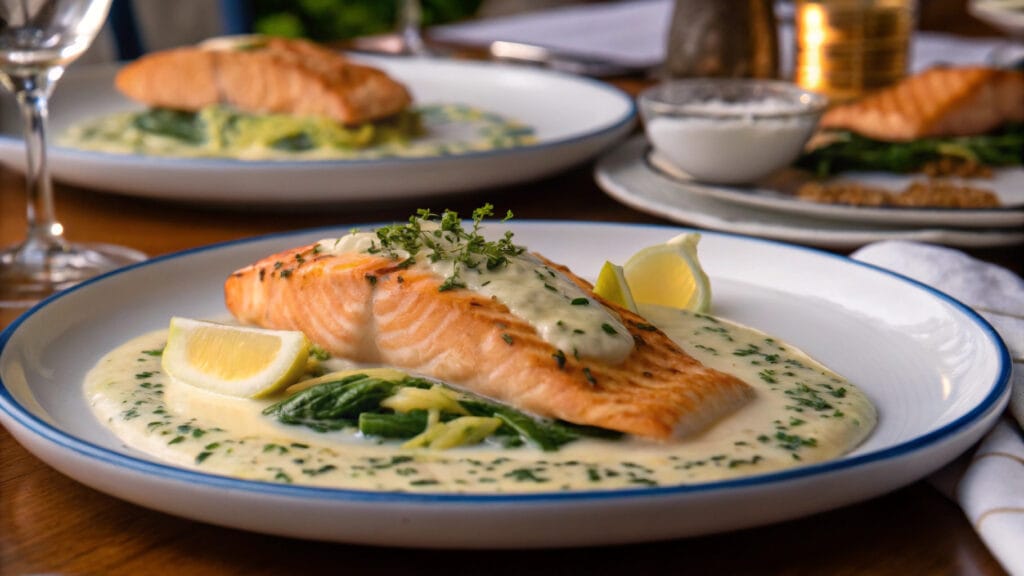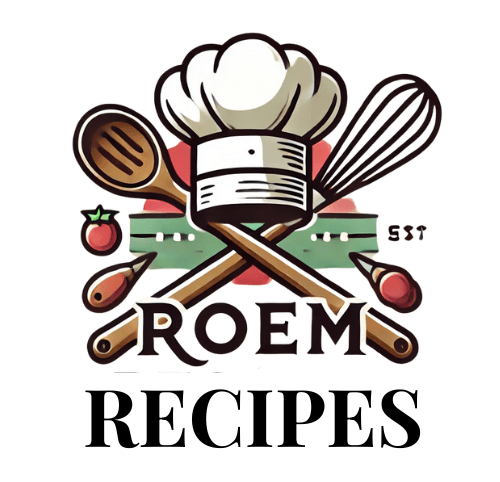When it comes to seafood, few options offer the versatility and nutritional benefits of white salmon. This lesser-known variety has started to capture the attention of culinary enthusiasts and health-conscious individuals alike. Its mild flavor, tender texture, and unique appearance make it a standout choice for meals that are as delightful as they are nutritious. In this article, we will dive deep into the world of white salmon, exploring what makes it special, why it might be a better choice than traditional salmon, and how you can prepare it to perfection in your own kitchen.
What is White Salmon?
White salmon refers to a rare variant of salmon that naturally exhibits a pale, creamy hue instead of the typical orange or red. This distinctive coloring occurs due to a genetic variation that affects how the fish metabolizes carotenoids, which are pigments found in their diet. Despite the visual difference, white salmon shares many similarities with its more colorful counterparts in terms of taste and texture.
Unlike farmed salmon, white salmon is often sourced from wild populations, making it a sustainable option for eco-conscious diners. Its delicate flavor profile makes it an excellent choice for those who find traditional salmon too overpowering. Additionally, white salmon is rich in essential nutrients, providing a host of health benefits without compromising on taste.
Key characteristics of white salmon include:
- Pale, creamy color with no artificial additives.
- A mild, buttery flavor that pairs well with various seasonings.
- Firm yet tender texture, ideal for a wide range of cooking methods.
Table of Contents
Why Choose White Salmon Over Traditional Salmon?
The choice between white salmon and traditional salmon often comes down to personal preference and dietary needs. However, there are several compelling reasons why white salmon might be the better option for your next meal.
One of the most notable differences is its flavor. While traditional salmon can sometimes taste overly fishy, white salmon offers a more subtle, buttery taste that appeals to a broader audience. This makes it an excellent choice for introducing seafood to those who may be hesitant to try it.
From a sustainability perspective, white salmon often comes from wild fisheries that prioritize eco-friendly practices. This ensures that your meal is not only delicious but also aligned with environmental values.
Moreover, white salmon is versatile in the kitchen, lending itself to various preparations, including grilling, baking, poaching, and pan-searing. Its mild flavor absorbs marinades and seasonings beautifully, allowing you to create dishes tailored to your tastes.
Health Benefits of White Salmon
Eating white salmon is not only a culinary delight but also a boon for your health. This unique fish is packed with nutrients that contribute to overall well-being. Below, we break down the key health benefits of incorporating white salmon into your diet.
- Rich in Omega-3 Fatty Acids: Like other salmon varieties, white salmon is an excellent source of omega-3 fatty acids, which are known to support heart health, reduce inflammation, and improve brain function.
- High in Protein: It provides a substantial amount of high-quality protein, essential for muscle repair, growth, and overall body function.
- Low in Calories: For those watching their caloric intake, it offers a nutrient-dense option that is low in calories yet satisfying.
- Packed with Vitamins and Minerals:
- Vitamin D: Supports bone health and immune function.
- Selenium: Aids in thyroid health and antioxidant protection.
- B Vitamins: Help in energy production and maintaining a healthy nervous system.
- Free from Artificial Coloring: Unlike some farmed fish, it naturally lacks the pigmentation that is often artificially enhanced in traditional salmon, making it a more natural choice.
How to Cook It Like a Pro
Cooking this flavorful fish is both simple and rewarding, as its mild flavor and tender texture make it adaptable to a variety of recipes. Below are some expert tips and techniques to help you prepare dishes that are both delicious and visually appealing.
- Grilling: Brush the fillet with olive oil and season with salt, pepper, and herbs like dill or parsley. Place it on a preheated grill and cook for 4-5 minutes per side until the fish flakes easily with a fork.
- Baking: Preheat your oven to 375°F. Lay the fillet on a parchment-lined baking sheet, drizzle with lemon juice, and add a sprinkle of garlic and rosemary. Bake for 15-20 minutes.
- Poaching: Fill a shallow pan with water or broth, and add aromatics like onion slices, bay leaves, and peppercorns. Simmer gently for 8-10 minutes until cooked through.
- Pan-Searing: Heat a skillet over medium-high heat, add a pat of butter, and sear the skin-side down for 4-5 minutes. Flip and cook for an additional 2-3 minutes for a golden crust.
To elevate your white salmon experience, consider serving it with complementary sides such as roasted vegetables, quinoa, or a refreshing cucumber salad. Incorporating citrus-based sauces or herb-infused oils can further enhance the dish’s flavor profile.

Delicious White Salmon Recipes to Try at Home
Creating mouthwatering dishes with this flavorful fish is easier than you might think. Its versatility allows you to experiment with various cuisines and flavors. Here are some popular recipes to inspire your next meal:
- Lemon Herb Delight: Marinate your it with olive oil, garlic, lemon zest, and fresh herbs like thyme and parsley. Grill or bake for a flavorful and light dish.
- Tasty Tacos: Pan-sear it with a smoky spice rub, then serve in warm tortillas with avocado, cabbage slaw, and a drizzle of lime crema.
- Creamy Pasta Dish: Combine flaked pieces with a creamy garlic sauce and toss with your favorite pasta for a comforting meal.
- Asian-Inspired Twist: Glaze your it with soy sauce, ginger, and honey, then broil or pan-sear until caramelized. Serve with steamed rice and vegetables.
Each of these recipes highlights the delicate flavors and adaptability of this exceptional fish.
Sustainability and Ethical Fishing Practices
Choosing white salmon is not only a treat for your palate but also an opportunity to support sustainable seafood practices. Ethical fishing ensures that wild salmon populations are preserved for future generations while protecting marine ecosystems.
- Wild-Caught Advantage: Unlike farmed fish, wild-caught white salmon comes from natural habitats, reducing the environmental impact of aquaculture.
- Traceable Sourcing: Look for certifications like MSC (Marine Stewardship Council) that verify the sustainability of the fisheries.
- Community Support: Purchasing from small-scale, ethical fisheries helps sustain local economies and encourages environmentally friendly practices.
By choosing sustainably sourced white salmon, you contribute to preserving ocean biodiversity and ensuring the availability of this unique fish for years to come.
Storing and Preserving White Salmon
Proper storage is essential to maintain the freshness and flavor of white salmon. Follow these tips to ensure your fish stays at its best:
- Refrigeration: Store fresh it in the coldest part of your refrigerator, ideally between 32°F and 38°F. Consume within 1-2 days for optimal freshness.
- Freezing: Wrap it tightly in plastic wrap or vacuum-seal it before freezing. This prevents freezer burn and maintains quality for up to 3 months.
- Thawing: Always thaw frozen portions in the refrigerator overnight or under cold running water. Avoid thawing at room temperature to prevent bacterial growth.
By following these guidelines, you can enjoy the exquisite taste of white salmon whenever you desire, without compromising quality.
FAQs
What is White Salmon, Washington known for?
This charming town is renowned for its breathtaking views of the Columbia River Gorge, outdoor activities like hiking, kayaking, and windsurfing, and its small-town charm. Visitors appreciate its proximity to Mount Hood and the unique blend of natural beauty and adventure opportunities. It’s also known for its vibrant local culture, with boutique shops, wineries, and restaurants offering farm-to-table experiences.
Is it worth visiting?
Absolutely! It is a hidden gem for adventure seekers and nature lovers. Whether you’re into outdoor recreation, such as river rafting and mountain biking, or prefer a leisurely escape surrounded by stunning scenery, the town has something to offer. Its welcoming community and rich natural environment make it a worthwhile destination.
How did White Salmon get its name?
It got its name from the White Salmon River, which flows through the area. The river itself was named after the pale-colored salmon once abundant in its waters, a nod to the unique heritage and ecology of the region.
How big is White Salmon?
White Salmon is a small town with a population of approximately 2,500 residents. Despite its size, it offers an expansive variety of attractions, from outdoor adventures to cultural experiences, making it a perfect destination for visitors seeking both relaxation and excitement.
Let me know if you’d like more FAQs or additional adjustments!
Understanding and Cooking with White Salmon
This rare fish is a flavorful alternative to traditional pink salmon, offering a delicate taste and versatile cooking options. For culinary enthusiasts, experimenting with white salmon can elevate your cooking repertoire. In this article, we’ll explore the uniqueness of white salmon, its nutritional benefits, and ways to cook it to perfection.
What Makes it Special?
Unlike regular pink salmon, it boasts a milder flavor and creamy texture, making it an excellent choice for those seeking something less robust. Rich in omega-3 fatty acids and essential nutrients, this fish is both a healthy and sustainable option. Pair it with a variety of side dishes for a wholesome meal. For example, you might consider serving it alongside a hearty loaf like the Pumpkin Banana Loaf, which complements its richness.
Recipes Featuring White Salmon
One standout recipe is pan-seared white salmon with a citrus glaze. The delicate acidity of the glaze balances the fish’s richness. Another great idea is to bake it with herbs and olive oil, served with a side of cookies for a complete, satisfying meal. Speaking of desserts, don’t miss the opportunity to try Earl Grey Cookies. Their subtle flavors provide a perfect ending to your white salmon meal.
Cooking Tips for Beginners
Cooking it doesn’t have to be intimidating. Start with simple methods like grilling or broiling to let its natural flavors shine. For inspiration, explore general cooking tips from Roem Recipes, including delightful snacks like Muddy Buddies, which are perfect to serve at your next dinner party.
Conclusion
It is a culinary gem that offers a unique blend of flavor, nutrition, and sustainability. Whether you’re savoring its mild, buttery taste or appreciating its environmental benefits, this fish is a versatile and rewarding addition to your dining repertoire. With the tips and recipes outlined above, you can confidently prepare and enjoy dishes that are as delightful as they are nutritious. Make white salmon a staple in your kitchen and discover a world of possibilities in every bite.

